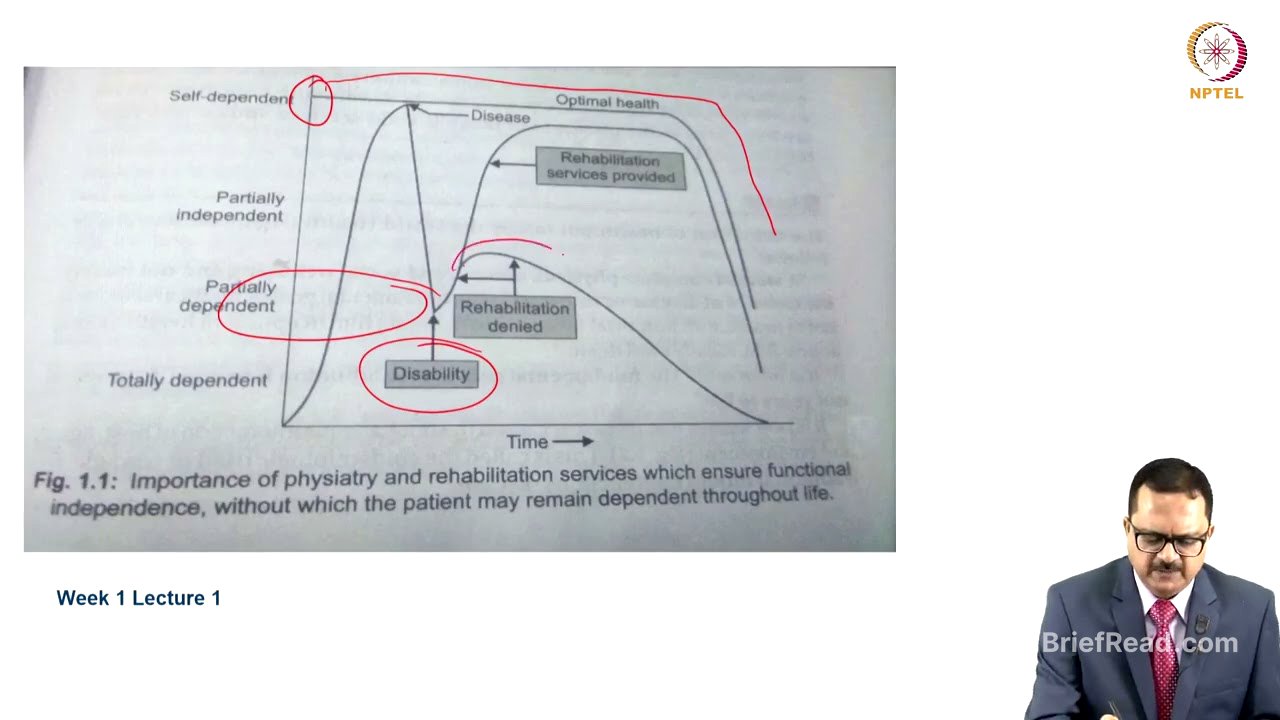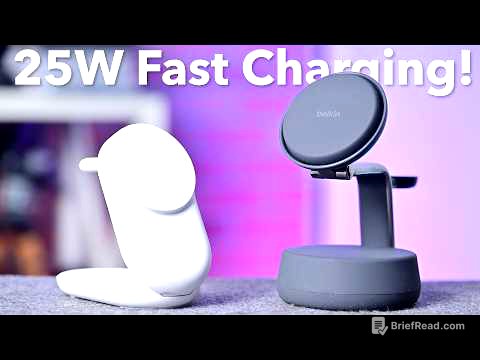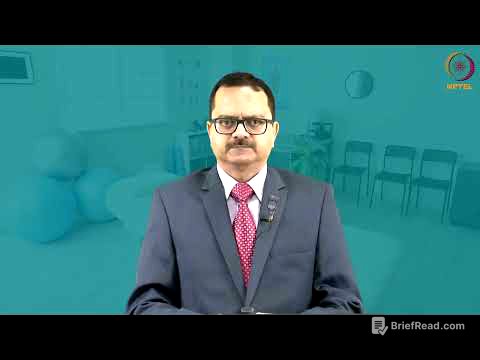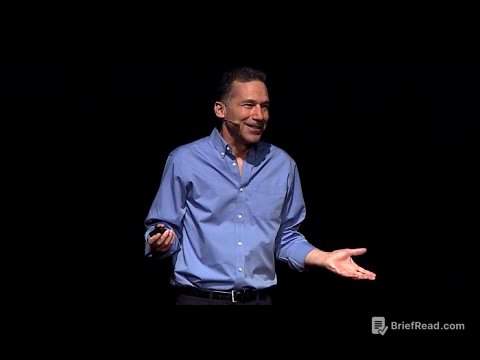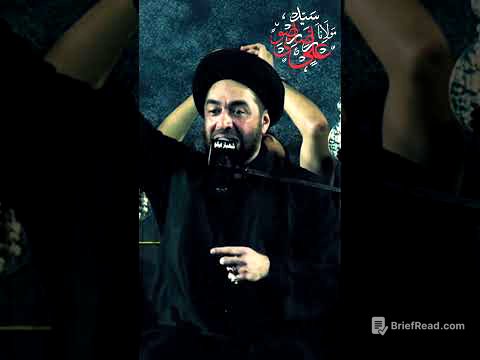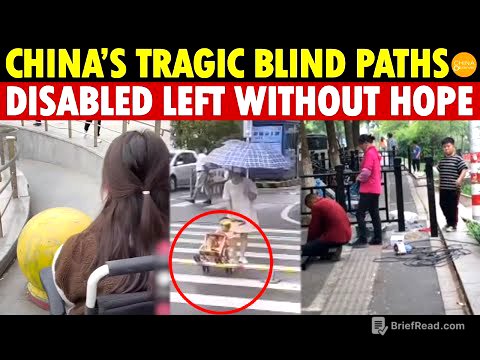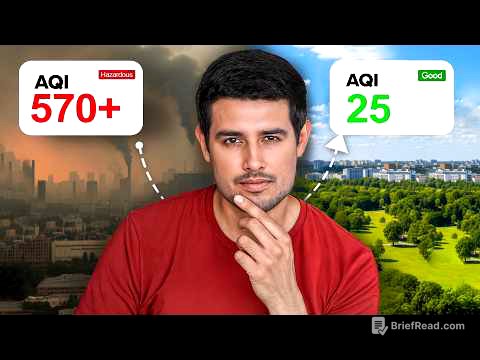TLDR;
This lecture provides an introduction to Physical Medicine and Rehabilitation (PMR), defining it as a medical specialty focused on improving and restoring biomechanical movements, functional ability, and overall quality of life. It highlights the role of physiatrists in diagnosing and treating conditions affecting movement, managing pain, and leading multidisciplinary teams to provide comprehensive, non-surgical treatments. The lecture also covers the scope of PMR, training pathways, sub-specialties, the importance of early rehabilitation, and the legal frameworks supporting individuals with disabilities.
- PMR aims to improve and restore biomechanical movements, functional ability, and quality of life.
- Physiatrists are nerve, muscle, and bone experts who lead multidisciplinary teams.
- Rehabilitation should start early to maximise functional ability and minimise disability.
Introduction to Physical Medicine and Rehabilitation [0:15]
The lecture introduces physical medicine and rehabilitation (PMR), also known as physiatry, as a medical specialty focused on improving and restoring biomechanical movements, functional ability, and the quality of the human body. Physiatrists are defined as nerve, muscle, and bone experts who treat injuries or illnesses affecting movement, diagnose and treat pain, and restore maximum function lost through injury, illness, or disabling conditions. They treat the whole person, lead a team of medical professionals, provide non-surgical treatments, and offer detailed explanations about medical conditions, treatments, and prevention plans.
Scope and History of PMR [2:49]
PMR is a medical specialty focused on prevention, diagnosis, rehabilitation, and therapy for patients experiencing functional limitations due to injury, disease, or malformation. Originating in the early 20th century with roots in ancient times, PMR encompasses various clinical settings and patient populations. In hospitals, physiatrists treat patients with amputation, spinal cord injury, stroke, traumatic brain injury, and other debilitating conditions. In outpatient settings, they treat muscle and joint injuries, pain syndromes, non-healing wounds, and other disabling conditions. Physiatrists are trained to perform injections into joints and soft tissues for pain management and to conduct nerve conduction studies and electromyography for diagnosing central nervous system and musculoskeletal conditions.
Training and Sub-Specialties in PMR [5:08]
Training in physical medicine and rehabilitation involves a four-year residency program in the United States, including one year of internship and three years of residency. In India, there is a three-year MD program after MBBS. Residents are trained in inpatient settings to care for multiple types of rehabilitation, including spinal cord injury, traumatic brain injury, stroke, orthopedic injuries, cancer, cerebral palsy, burns, and pediatric rehabilitation. They are also trained in outpatient settings to manage chronic conditions. Diagnostic and therapeutic measures include electromyography, nerve conduction studies, musculoskeletal injections, and trigger point injections. Sub-specialties include neuromuscular medicine, pain medicine, pediatric rehabilitation medicine, spinal cord injury, sports medicine, brain injury, and palliative medicine. Fellowships are available for further training in areas such as musculoskeletal or spine, stroke, multiple sclerosis, neurorehabilitation, electrodiagnostic medicine, cancer rehabilitation, and occupational and environmental medicine.
Role of Rehabilitation [7:21]
Rehabilitation involves utilising the existing capacities of a handicapped person through coordinated medical, social, educational, and vocational measures to optimise their functional ability, making their life more meaningful and productive. It should start as early as possible and is administered alongside specific medical or surgical treatment. Rehabilitation can be medical, focusing on limiting disability through medical and paramedical skills, or socio-vocational, aiming to limit handicap. The goal is to minimise disability and handicap, helping the individual lead a useful life within their limitations, transforming a disabled person into a differently-abled person. Timely rehabilitation can bring an individual from a state of partial or total dependency to almost self-dependent.
Indications for Rehabilitation [10:58]
Indications for physical medicine and rehabilitation treatment include brain disorders like stroke, multiple sclerosis, and cerebral palsy, as well as long-term chronic pain, major bone or joint surgery, severe burns or limb amputation, and severe arthritis. Individuals recovering from severe illnesses such as infection, heart failure, or respiratory failure may also require PMR. Specific conditions like spinal cord injury and brain injury necessitate PMR treatment. Paediatric indications include cerebral palsy, musculoskeletal diseases, Down syndrome, genetic disorders, intellectual disability, muscular dystrophy, neuromuscular disorders, sensory deprivation disorder, autism spectrum disorder, and developmental disorders. Children with speech disorders and language problems benefit from timely PMR treatment.
Approach to Rehabilitation [12:47]
While many specialties focus on acute management and stabilisation of pathological conditions, PMR focuses on holistic, patient-centric care, addressing both acute and chronic management through medical, surgical, social, and vocational means. Physiatric treatment includes medications, therapeutic exercise, injections, surgeries, physical modalities, and education. PMR aims to maintain and restore optimal function by emphasising prevention, diagnosis, and treatment of functional limitations, enhancing a person's functional prognosis through a dynamic, team-oriented approach. Medical treatment phases include preventive medicine, curative medicine, and rehabilitation medicine, which focuses on improving function by reducing impairment and preventing complications of disability.
Goals of Rehabilitation [14:45]
The goals of rehabilitation include addressing problems with orientation, physical independence, and dependence on caregivers. Mobility is a key focus, especially for conditions like poliomyelitis and paraplegia. Occupational integration, including training and job placement, is essential for self-sufficiency. Social integration aims to integrate handicapped people into society, preventing isolation. Economic self-sufficiency ensures a means of livelihood and a dignified life. Impairment is defined as any loss or abnormality of psychological, physiological, or anatomical structure or function. Disability is any restriction or lack of ability to perform an activity normally due to impairment. Handicap is a disadvantage in a social context resulting from impairment or disability, limiting the fulfillment of a normal role. The WHO identifies six handicaps: locomotive, visual, hearing and speech, cardiopulmonary, intellectual, and emotional. Impairment is at the tissue or organ level, disability at the individual level, and handicap at the society level.
Laws for the Disabled [18:13]
Laws governing people with disabilities include the Americans with Disabilities Act of 1991 in the US and the People with Disability Act of 1995 in India. International laws include the WHO Global Disability Action Plan 2014-2021, the World Report on Disability, and the Convention on the Rights of Persons with Disability, focusing the international health community on the requirements of persons with disabilities.
Take-Home Message [19:08]
Physical medicine and rehabilitation is a medical specialty focused on the care of the differently-abled. PMR is a team effort aimed at providing the disabled with a vocation, a barrier-free place to live, and the right social environment to reduce their handicap. The concept of the right to work treats work as more than just a means to make money. PMR aims to make the disabled independent contributors to society, enabling them to stand on their own feet. It is important to show disabled people empathy rather than sympathy.
